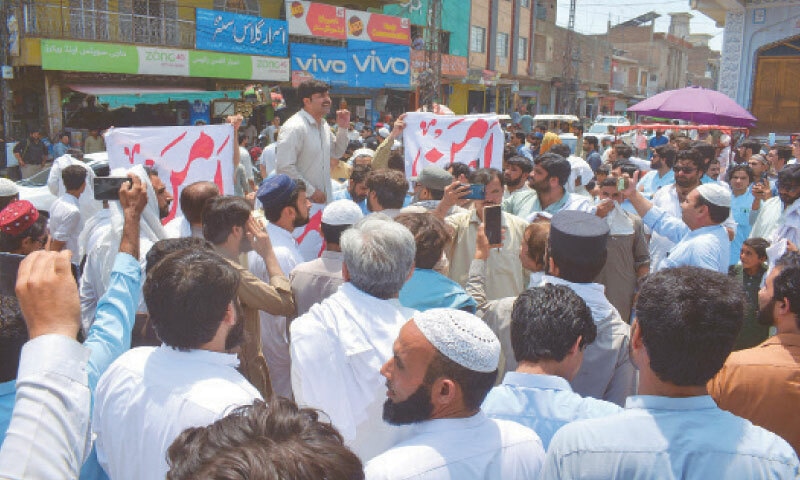Dr. Naveed Elahi
Chinese investigators have joined the probe into the killing of five Chinese nationals in a suicide attack at Bisham last week. This terrorist attack, which claimed the lives of at least six people, including five Chinese engineers, working on the hydropower project at Dasu, was the third such attack on Chinese interests in quick succession within a week, after the terrorist attacks on the port and security installations at Gwadar and Turbat. China stopped the construction work at the dam and has insisted to be part of the investigations of the incident. It smacks of mistrust in Pakistan’s counter terrorism strategies and efforts.
It is high time for Pakistan to review its security strategies and policies. Ironically, Pakistan formulated several national security policies and plans during the last decade but hardly one could be partially implemented, that too for a limited period. Despite the worsening security situation and uptick in the multifaceted external and internal threats to the country, these policies have remained shelved and made little contribution in arresting the situation. Obviously, during the period of ten years different governments came into power but all refrained from implementing these policies. Thomas R. Dye’s insightful input is quite relevant to explain this inaction, “Public policy is whatever governments choose to do or not to do”. It can be construed that the successive governments made a willful choice to avoid implementation, for the reasons best known to them.
Precisely, four national security policies were formulated during the last one decade, each with the potential to significantly impact Pakistan’s internal security landscape, i.e., National Internal Security Policy (NISP) of 2014-18; National Action Plan (2014); National Internal Security Policy (NISP) of 2018-23 and National Security Policy 2022. Unfortunately, all met the same fate.
First, National Internal Security Policy (NISP)2014-18, a 94-page document, termed the first ever internal security policy, was articulated by the Ministry of Interior and National Counter Terrorism Authority (NACTA) in December 2013, and subsequently reviewed and approved by the cabinet in February 2014. It set the goals to establish and ensure writ of the state within Pakistan’s territorial boundaries, defeat extremism, and launch counterterrorism measures to protect citizens from all internal threats. Ironically NACTA itself has remained a spineless department that failed to perform due to turf war and internal debilities. Axiomatically, NISP 2014 could not see the light of the day. Albeit it aimed at addressing the underlying causes of extremism and terrorism in Pakistan and an implementation plan, NISPIP, was also added in it, it did not reach the stage of implementation. Institutional conflicts and political instability, including widespread protests and government crises, stymied its implementation. This failure underscores the challenges of coordinating across overlapping security institutions and the distractions posed by the struggle for political survival.
The second policy was formulated after a grim wake-up call on 16 December 2014 when the terrorists mercilessly gunned down 145 students and teachers at Army Public School Peshawar. At that point, the government decided to take the terrorists head on. Thus, National Action Plan (NAP) was formulated to tackle the terrorists, extremists, and their facilitators in urban areas. Military operation Zarb-e-Azb was launched to tackle the insurgents and terrorists in tribal areas. It was a hurriedly hatched 20-point plan, written on two pages, with two lines explaining every point. The responsibilities heaped through it were enormous which needed every point to be prioritized and strategized to make it work. Sans strategic foundation, necessary for sustained success, this plan was not expected to last long. Initially it worked well in some areas like Punjab and Karachi but soon the steam petered out of it. Now, despite a tangible rise in terrorism and cross border excursions for the last more than two years, NAP has not been activated.
Building upon the foundation laid by NISP 2014 and NAP, the third policy, National Internal Security Policy 2018-23, was formulated at the fag end of the tenure of the government. This updated policy acknowledged the emergence of new threats, such as extremism, alongside the successful containment of older ones. To address security challenges comprehensively, NISP 2018 focused on three primary domains of interventions i.e., Administrative: Enhancing the state’s capacity to effectively respond to security issues; Ideational: Challenging the ideological foundations of exclusionary narratives; Socio-Economic: Addressing the socio-economic deprivations that serve as breeding grounds for security challenges to arise. Sadly, it too fell victim to the end of a government term, highlighting a persistent cycle of policy neglect.
The fourth policy came three years later, known as National Security Policy 2022–26, on 14 January 2022, terming it an unprecedented comprehensive national-security policy. It was also unveiled a couple of months before the end of the government in March 2022. Axiomatically, keeping to the tradition of shelving the policies of the previous governments, the next government ignored NSP to the hilt and it is lying somewhere in the cold corners of forlorn official drawers of the Ministry of Interior. This pattern of neglect not only illustrates the challenges of policy continuity across different governments but also reflects a broader issue of prioritization within Pakistan’s national security agenda.
It is relevant to mention here that despite over four decades of battling terrorism, particularly in the post-9/11 era, Pakistan lacks an officially articulated national counter-terrorism strategy. The success of the UK’s ‘CONTEST’ strategy offers a model worth considering, suggesting that an integrated and well-implemented approach could yield better outcomes than the current piecemeal knee-jerk tactics. Similarly, a leaf can be taken out of Singapore’s domestic counterterrorism (CT) apparatus, which has demonstrated its effective ability to detect, deter, and disrupt threats.
As a new government is in the saddle, confronting the rising terrorism and insurgency, especially that is aimed at CPEC, must be a top priority. The key to resilience lies in the implementation of security policies and strategies, ensuring concerted and sustained efforts to overcome the formidable challenges posed by internal and external adversaries.
The author is Editor of The Strategic Brief and Dean National Institute of Public Policy Lahore



